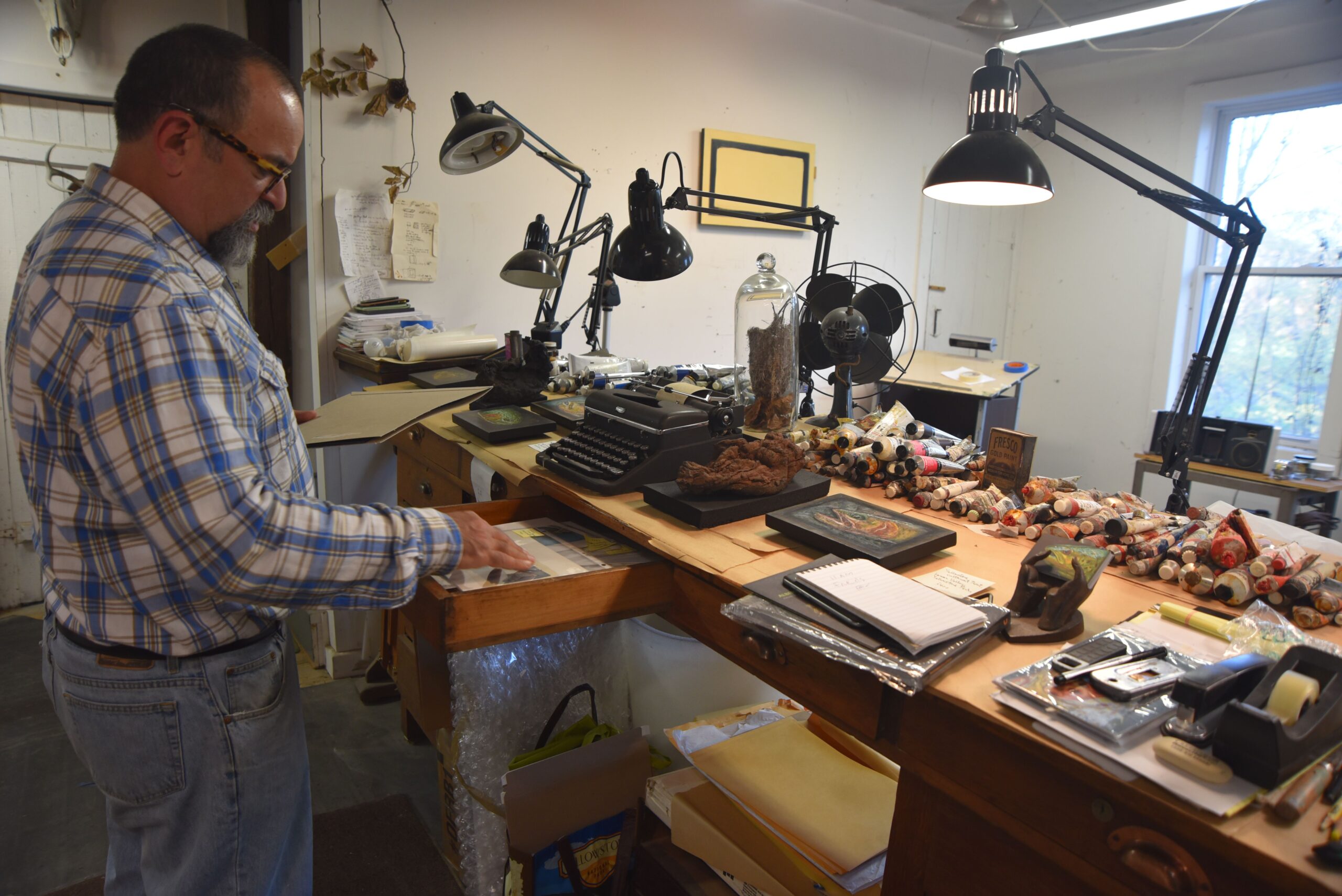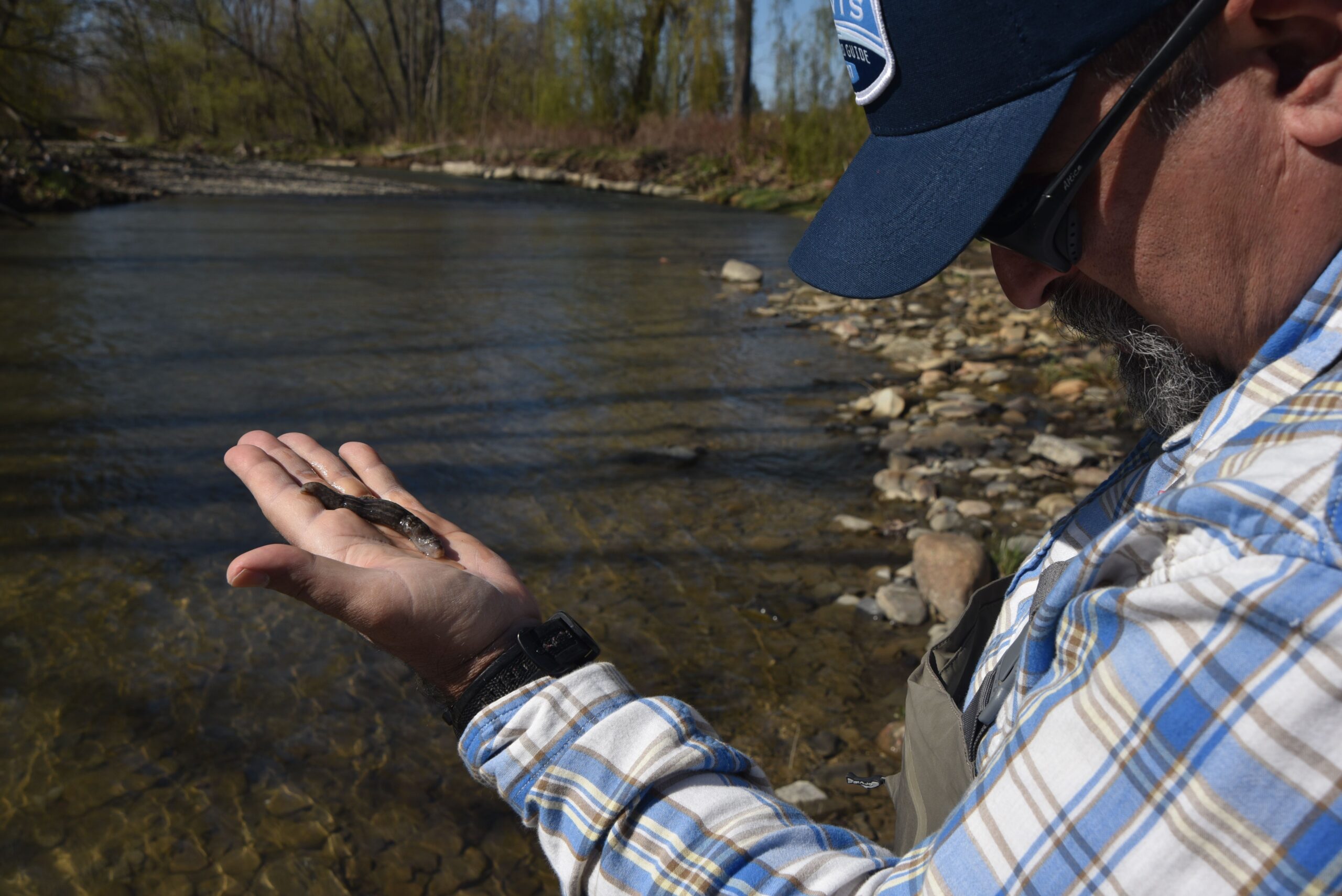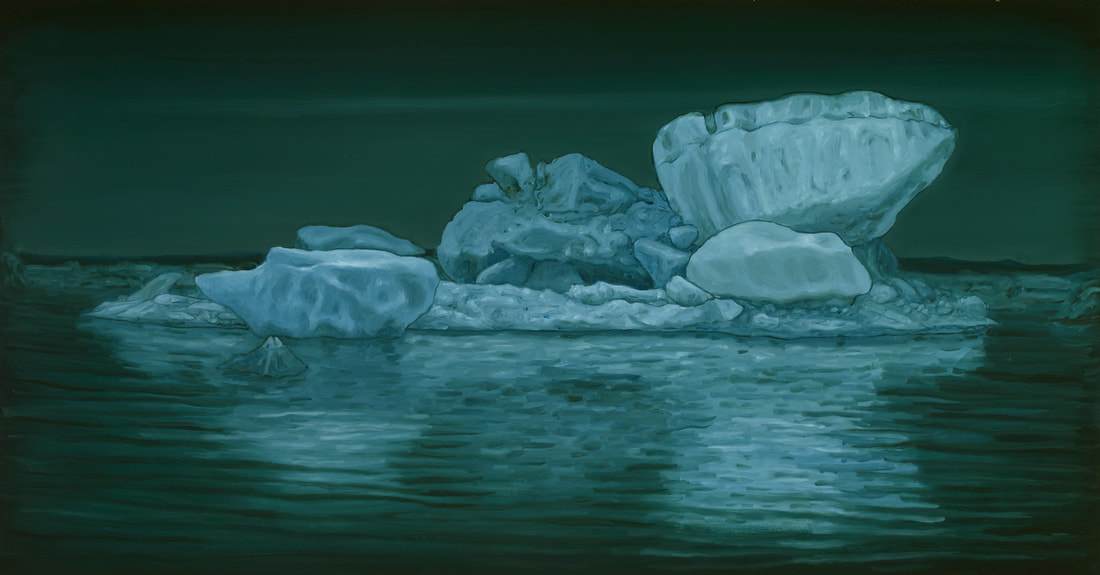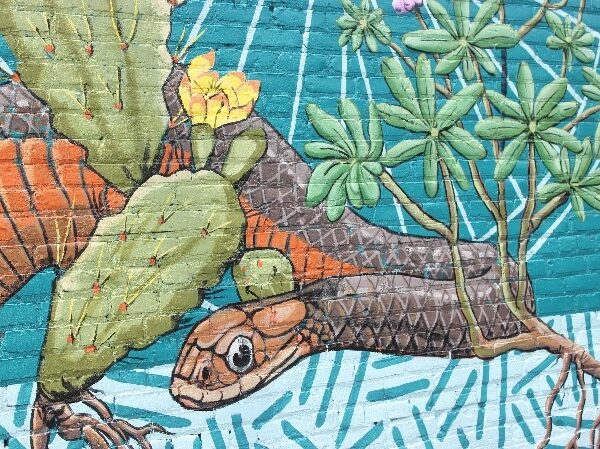Alberto Rey’s artistic passions are wide-ranging. But water and wildlife may most succinctly describe them. The retired State University of New York at Fredonia professor of art has waded into drawing, painting, ceramics and filmmaking all while diving headfirst into the deepest affection for the natural world.
The 64-year-old Cuban-born artist moonlights as an Orvis-endorsed fly fishing guide on Western New York’s Lake Erie tributaries. As founder of the Children in the Stream program, he’s created a three-decade record of fly tying and rod building classes, stream fishing excursions, brook trout stockings and an annual clean-up day on the water.

Alberto Rey. (Photo by David Moog)
In pursuit of striking and conscientious art, Rey’s projects have taken him to the Bagmati River in Nepal, the unseen collections of museums and universities, icebergs in the far north, and closer to home, rivers and streams on lakes Ontario and Erie. His Biological Regionalism series examines site-specific waters.
“The idea is that the artwork tries to examine bodies of water near the exhibition site so that people who go to see the work are familiar with either the bodies or the areas where they are,” Rey explained. “If you can understand issues that are local or regional, you have a better understanding of more global issues, and it’s all interconnected. But it’s important to understand what’s in your backyard, first.”
To stress the universality of issues, Rey includes a few pieces of art from projects in distant places.
From Scajaquada Creek in Buffalo, New York which was partly buried a century ago by a city tired of seeing and smelling its sewage and pollution in the Oswego River. What begins as a pristine spring stream, becomes a waterway once used as an industrial chemicals disposal service.
Rey’s exhibitions intend to do more than simply be gazed upon. They are meant to be consumed. While many modern exhibits feature works of art simply displayed, Rey’s are known for offering information, sounds and videos in addition to canvases. They’re often an immersive experience meant to inundate both the eyes and the mind.
Multi-dimensional exhibitions

Carolina Parakeet, from The Extinct Bird Project. (Artwork by Alberto Rey from the collection of Lauren and Dave Benson)
His Extinct Birds Project examines 17 species of extinct birds whose skins (preserved bodies) he photographed, measured, drew and discussed with staff at The Roger Tory Peterson Institute of Natural History and the Museum of Comparative Zoology at Harvard University.
Exhibition installations can include paintings up to 10 feet long as well as presentation of intriguing facts, scientific data, audio and videos. The Extinct Birds Project installation included an audio recording of the haunting and fruitless mating call of the last bird of its kind on Earth. With each exhibition Rey creates web pages to preserve the art and information, making it permanently available to those who may seek fuller understanding.

Alberto Rey looks for just the right thing in his studio. (Photo by James Proffitt)
“Preaching is the best way to lose an audience,” Rey said. “I want to present information to an audience then let the viewers decide what they want to do if anything and hopefully understand a little more about their environment and be more sympathetic to what is happening. If there are decisions to be made in the future with policies and politicians, they’ll have a better background from with to make decisions and move forward.”
Changing climate, changing sports

Alberto Rey — forever inquisitive — examines an interesting find while fishing on Canadaway Creek. (Photo by James Proffitt)
As climate change impacts the environment, Rey has taken notice of its effects on Lake Erie’s tributaries and their fish. Speaking in his studio last autumn, Rey lamented the stark changes in steelhead streams in recent years.
“It’s almost the beginning of October and when I started guiding over 20 years ago we would be heavily into the beginning of steelhead season,” he explained. “There would be a lot of fish in the water and now we have barely any water and only a trickle of fish coming in, so it’s changed quite a bit. Climate-wise the water temperature tomorrow will be in the 70s and its dry out. Every year it’s warmer and warmer.”

Biological Regionalism West Slope Cutthroat West Fork of Bitterroot River Montana. (Artwork by Alberto Rey)
For that reason, Rey said, he feels sportsmen and sportswomen who are concerned about the bigger picture should act upon their conscience.
“We’re stewards of the environment, so if water’s too hot we shouldn’t fish because it threatens cold-blooded fish,” he said. “We need to be more ethical about how we fish and become more active in organizations that protect the environment. And if you don’t have time to do that, support those organizations with funds if that’s a possibility.”
Climate change is one reason Rey made trips to Iceland to photograph, draw and paint icebergs for his Lost Beauty Project. With rising temperatures, icebergs that are calving off glaciers near the Arctic Circle offered a glimpse into the future, and a chance for Rey to capture something that may be fleeting, just as the 17 extinct bird species were. His series of paintings turned into a book on the icebergs, undertaken with the aim of bringing awareness to the causes affecting that region.

Lost Beauty Icebergs. (Artwork by Alberto Rey)
The youth fly fishing program, Rey said, aims at a long-term goal that’s particularly important.
“We provide waders and boots and rods, everything they need,” he explained. “And there’s no charge for that and the reason is I don’t want any child to be embarrassed by their economic status. I want every child to feel like they could walk off the street and participate in fly fishing and never worry what it costs, and that continues to this day.”
Before Christmas, a free raffle takes place with rods, reels and all the gear needed for fly fishing spread on tables. Kids can pick something until everything is gone. Rey quipped with the slightest of smiles that it often seems youth participants with the least financial means acquire the most-needed gear.
Shaping water into art

A new oil painting hanging in Rey’s studio. (Artwork by Alberto Rey)
Up next? A series of paintings and pottery inspired by more than two dozen bodies of water fished during a recent trip around the globe.
“I kept a journal and did watercolors and drawings,” he said. “A lot of the flies we use here you can use anywhere in the world. So that tells you how interconnected our waters are. That’s why it’s necessary to understand the importance of protecting them. Communities depend on that fresh water, and not for recreation. Many of the poorer communities around the world suffering the most are just trying to find clean drinking water.”
And in that world Rey said, there will hopefully be, whether a result of an art exhibition or a kids’ fly fishing program, new serious and dedicated conservationists.
Catch more news at Great Lakes Now:
Toledo’s community art highlights importance of native plants for safe drinking water
From the Ice Age to Now: A Lake Erie timeline
Featured image: Biological Regionalism Ellicot Creek Amherst New York USA 2010. Installation at Lightwell Gallery University of Buffalo. (Photo by Biff Hendrich)




